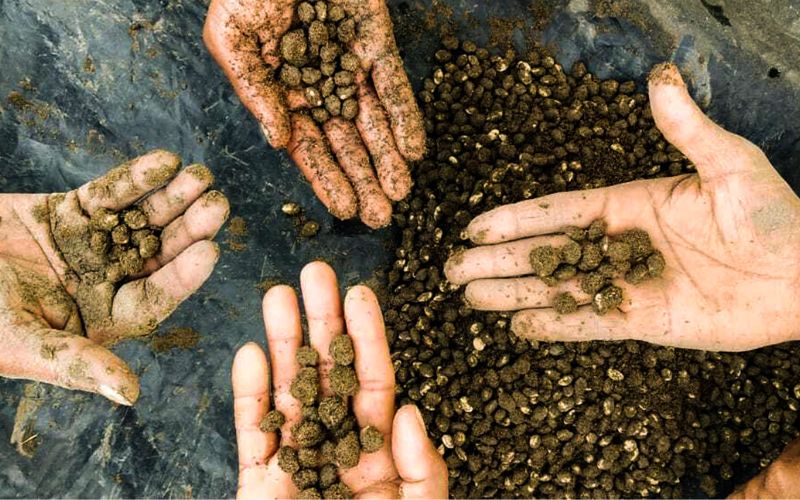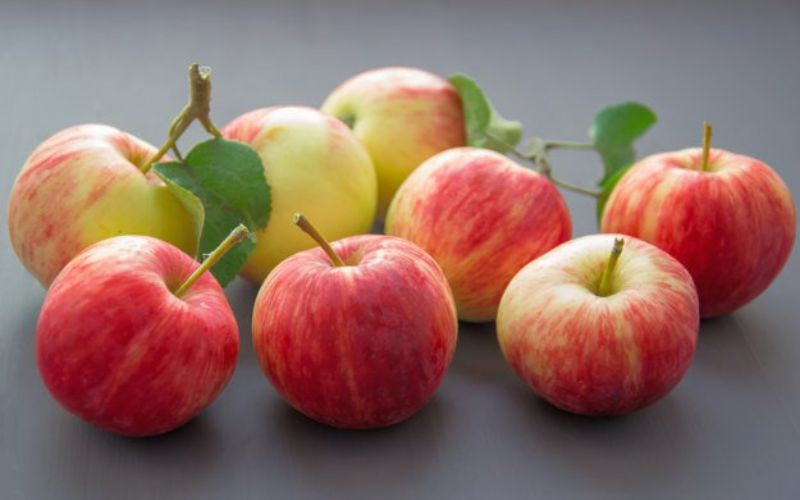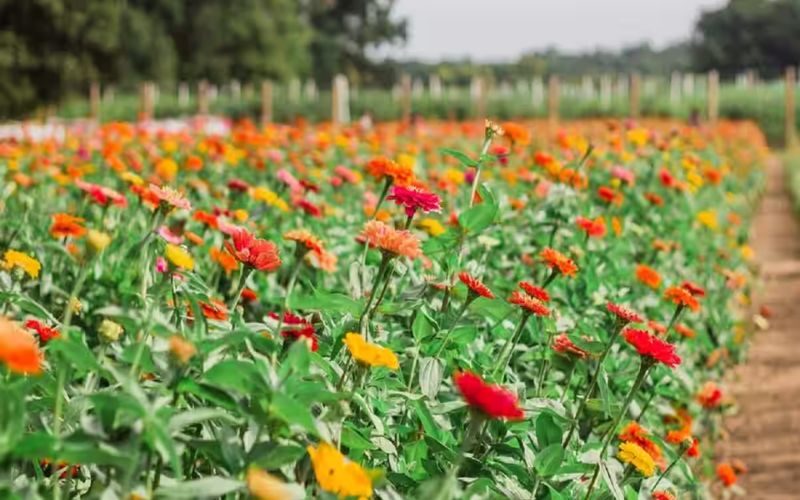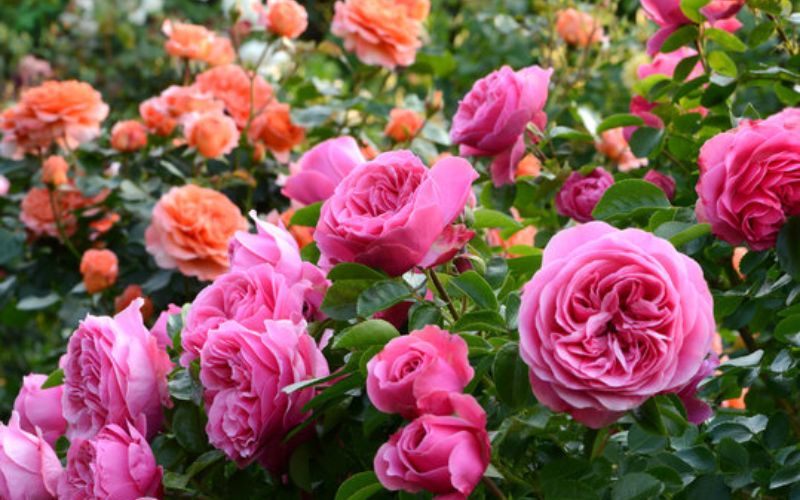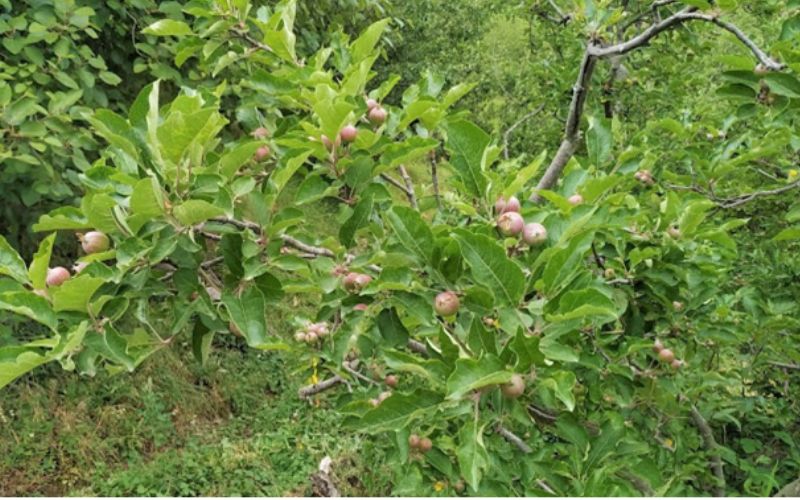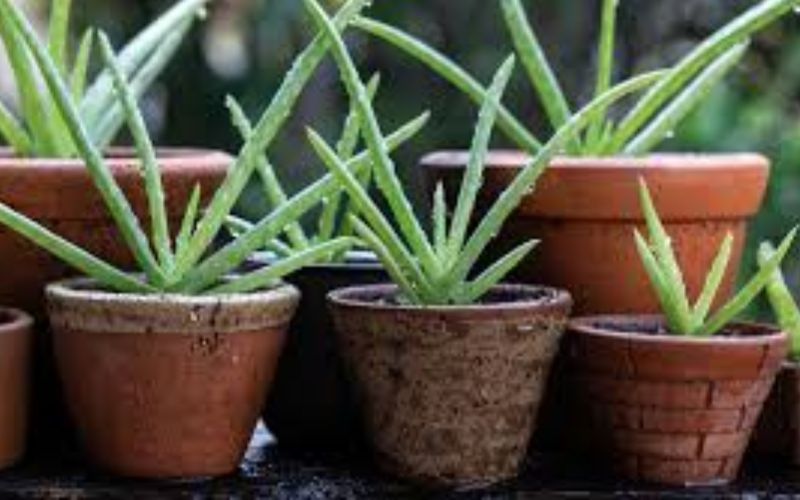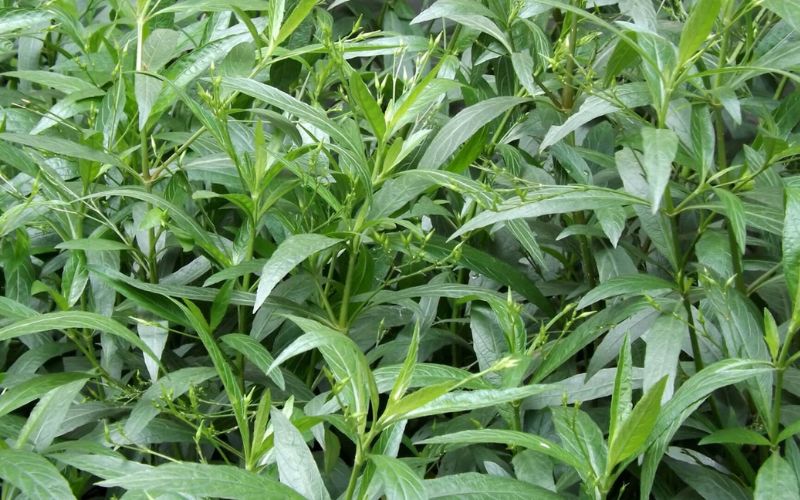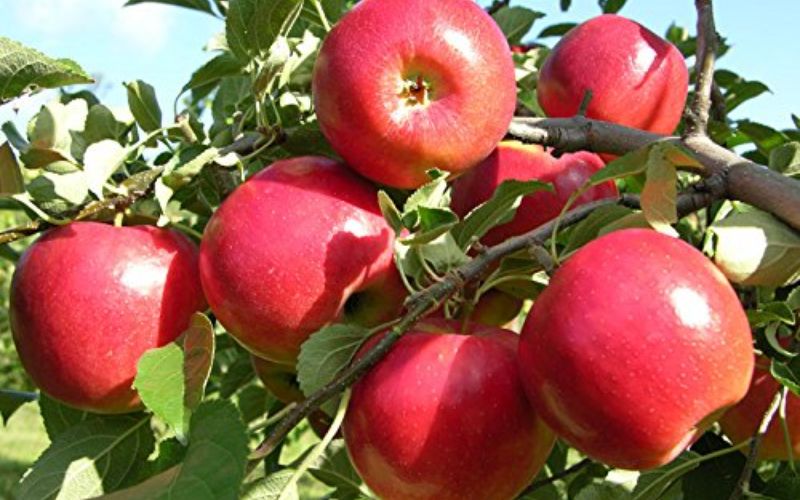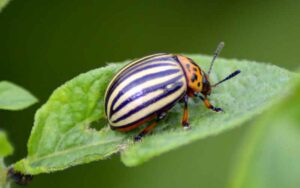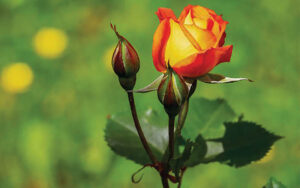Integrated Pest Management in Floriculture and Major Insect-Pests of Rose & Their Management
Dr. Saurav Gupta
PEST:
A pest is any animal or plants detrimental to crops, livestock and forestry. The term is also used for organisms that cause a nuisance, such as in the home. An older usage is of a deadly epidemic disease, specifically plague. In its broadest sense, a pest is a competitor of humanity, which means disease-causing microbes, plant devouring insects, macro-fauna like rats and moles, weeds, off-type plants and even human beings are pests in the perspective of plants.
IPM:
IPM is a pest management system that in the context of the associated environment and population dynamics, utilizes all the appropriate techniques to minimize the pest population levels below those causing economic injury. Integrated Pest Management (IPM) includes cultural practices, host plant residence, mechanical control, biological control, use of bio-pesticides, botanicals and Chemical control.
1. Cultural methods:
Cultural methods include sanitation, tillage and inter-cultivation, time of sowing, plant population, manures and fertilizers, water management, habitat diversification agronomic adjustments, necessary for higher yield, which are at the same time directed at prevention, mass multiplication and spread of pests by modifying the crop microclimate.
Physical methods include Treatment of Planting Material:
Firstly, the first priority should be healthy planting material. If we are not 100% sure about its being healthy then it should be treated properly to prevent further build-up of diseases. e.g.hot water treatment of corms and cormels of gladiolus, tuberose bulbs, etc.
a. Irrigation: Irrigation of the field prevents the termite attack.
b. Drainage: Proper drainage prevents the build-up of rot fungus and bacterium and also several insect pests. e.g. grey moulds of all ornamental plants can be prevented by sanitation and drainage, Botrytis bud and twig blight of rose.
c. Sanitation: It includes removal or destruction of breeding refuges and overwintering of pests. Seed material, farm yard manure etc. carrying insect eggs or its stages of development should be carefully screened before their use. Destruction of alternate hosts minimizes pest population build-up. E.g. Rose black spot/Dieback/leaf spot/rust, basal rot of Carnation and downy mildew and all wilts and rots.
d. Tillage and inter-cultivation: Ploughing and inter-cultivation bring about unfavourable conditions for the multiplication of pests as well as diseases and weeds. E.g. Proper drainage in the field prevents the build-up of wilts and rots. Quiescent stages (pupae) of harmful organisms will be exposed to dehydration or to predation by birds and other stages may be mechanically damaged or buried deep in the soil. E.g. Marigold inter-cultivation prevents nematode growth.
e. Cultivar selection: Cultivars with high yield potential and quality without resistance to pests and diseases are the main causes of frequent epidemics and mass multiplication of pests and diseases. A large number of cultivars’ resistance/tolerance to pests and diseases has been developed to suit different agro-ecosystems. Selection of such cultivars can bring down the losses considerably.
f. Time of sowing: As weather influences, the developmental rhythm of plants as well as the growth and survival of pests and diseases, serious setback occurs when the weather conditions are such as to bring about the coincidence of susceptible growth stages with the highest incidence of pests and diseases. Therefore, the adjustment in sowing dates is often resorted to as an agronomic strategy to minimise crop losses.
g. Habitat diversification: Many pests prefer feeding on a particular plant or others. This preference may be exploited to reduce the pest load on crops. Crop rotation, intercropping, traps cropping and strip cropping can bring down the pest load considerably
h. Trap cropping: Trap cropping is the planting of a trap crop to protect the main cash crop from a certain pest or several pests. The trap crop can be from the same or different family group, than that of the main crop, as long as it is more attractive to the pest. Example: Trap cropping perimeter/ border trap cropping row intercropping.
Advantages of trap cropping: Lessens the use of pesticides. Lowers the pesticide cost Preserves the indigenous natural enemies. Improving the crop’s quality helps conserve the soil and the environment.
2. Mechanical Control
a. Hand-picking method: Hand-picking of eggs and larvae of insects is a very effective method. This method of pest control is useful if the crop is in a small area. Pour a small amount of kerosene into a polythene bag and pick up the larvae during evening hours and put them in the bag. The pests can be controlled this way without the use of any chemicals. This should be done when the pest numbers are low. Hand-picking of larva: Wild grasses and weeds should be removed from the field bunds and field, since, these are the favourite egg-laying spots of the pests.
b. Bird Perches: Install ‘T’ shaped bird perches which are long dried twigs @15-20 per acre. These attract birds for resting and the resting birds devour the larvae in the field. Bird perches are resting places for predatory birds to rest and look for prey; such as insect pests of cotton, peanuts, and cowpeas. Predatory birds prefer to look for prey in field crops where they have places to rest. To make bird perches, use bamboo or wooden poles or tree branches. Erect either of these at regular intervals in the field. To have live bird perches within the field, plant Setaria species (foxtail cultivars). These plants are found to be attractive to predatory birds. The birds feed on their seeds. In the cotton field, plant Setaria in every 9th or 10th row of cotton. Once the birds are on the field, they prey on cotton bollworms and other insects.
c. Installation of Yellow/Blue/White Sticky traps: Installation of Yellow/Blue/White sticky traps @50/ha is very effective for monitoring/controlling small sucking pests like Aphids, Thrips, Whiteflies, bugs etc. Castor oil-smeared yellow colour empty tins or plates are kept in the field. White flies get trapped in these sticky traps. These are wiped out every day and castor oil is applied again. Bright blue traps are for monitoring thrips, Bright white traps are for monitoring flea beetles and tarnished plant bugs.
d. Pheromones Traps: Pheromones are ectohormons secreted by an organism, which elicit behavioural responses from other members/sex of its own species. These are extremely selective, nontoxic, highly biodegradable and effective at low application rates. Synthetic sex pheromones are commercially available and are used for surveillance, monitoring and control of many Lepidopterous pests such as spotted bollworm, tobacco caterpillar, potato tuber moth, diamondback moth and leaf folder etc.
e. Fairomones: These are volatile compounds that evoke behavioural responses adaptively favourable to the receiver. Fairomones are released either by the host plant or by the host insects. While the former is issued by the pest and natural enemies to locate their habitats, the latter is used for prey finding and parasitisation/preying. Fairomones from host plants can be effectively used to mass trap pest species as well as for monitoring. The use of fairomonal compounds to increase the efficiency of predator C. carnea and the egg parasitoid T chilonis had been successfully demonstrated.
f. Light trap: Light trap is a device used at night in the field to collect moths and other flying insects such as armyworm bugs, cutworm flies, leafhoppers, planthoppers, and stem borers etc.
3. Biological Control:
Biological control basically means, “The utilization of any living organism for the control of insect-pest, diseases and weeds”. This means the use of any biotic agents for minimizing the pest population either directly or indirectly. Classical biological control involves the deliberate and natural establishment of natural enemies in areas where they did not previously occur. In addition to the deliberate introduction of biocontrol agents, proper attention needs to be given to the conservation and augmentation of natural enemies that already exist in an area. This should be treated as important as many insect predators are much more susceptible to insecticides than the pests they attack. Biological control agents for insect pests are available in nature abundantly and work against crop pests naturally called as Natural Control. E.g.Powdery mildew of rose -The fungal antagonist Sporothrix flocculosa has been reported to be highly effective in controlling the disease (Belanger et al., 1994). Tilletiopsispallescens, a naturally occurring ballistospore forming yeast isolated from mildew infected leaves has been proved to be effective against the fungus. The bio agent reduces the incidence of disease by 97-98% (Na et al., 1997)
Bio Intensive Pest Management (BIPM) The pest management programme where natural enemies of the crop pests form the core component is designated as (BIPM). The most commonly used bio-agents in BIPM are broadly classified into three categories:
1. Parasitoid 2. Predators 3. Microbes.
a. Parasitoid:
These are the insects, either equal to or lesser than the size of the host insect (pest) and always require passing at least one stage of their life cycle inside the host system. Due to their high multiplication rates, they are of vital importance in the biological control of insect pests. Trichogramma Egg parasite against eggs of gram pod borer, rice stem borer, castor semi looper, cabbage diamondback moth etc. Braconhebetor against insect-pest of coconut and sugarcane Brachymeria against the pupae of several pests of plantation crops.
b. Predators:
These are those insects, which are generally bigger than the host and feed on several of the pests by predating upon them externally. They will be consuming several of the insect pests during their life cycle and hold a key role in minimizing the pest population in field conditions. Predator Prey Chilizonus, Cryptolaemus, Scymnus, Meoichlus and Pharoscymnus. mealy bugs, coccids, scales and mites on citrus, grapevine and guava Mirid predator Crytorhinus brown plant hoppers Insect predator Chrysopa aphids, mealy bugs and young caterpillars. Chrysoperlasp several of the soft-bodied insects such as aphids, leaf hoppers etc; ladybird beetle aphids and mealy bugs; spiders varied number and types of insects, especially in the ecosystem.
c. Microbial organisms:
These are those micro-organisms which are capable of causing diseases in insects as a result they lose their appetite, subjected to several physiological disturbances, leading to the ultimate death of the insect. Nematode pest management by using biotic agents is also one of the most promising areas and gaining much desired importance in the current scenario of organic farming. a) Insect viruses b) bacteria c) Entomo Pathogenic Fungi d) Entomo Pathogenic Nematodes and other organisms like protozoans and Rickettsia etc. several antagonistic fungi and bacteria being successfully used in minimizing the plant disease incidence.
I. Viruses: Nuclear polyhedroses viruses (NPV): They cause typical “tree top disease” in insects. The infected insect loose appetite becomes restless and reaches the apical portion of the plant due to oxygen depletion inside the insect system. Later the infected insect will be dying by hanging itself in an inverted ‘V’ shape on the apical portion of the plant. Effective against lepidopteran insects in different crops. HaNPV is used to manage Helicoverpaarmigera while SlNPV is meant for Spodopteralitura. Entomopathogenic viruses are highly specific to host insects which makes them exceptionally safe to non-target organisms and nature.
II. Bacteria and Fungi: Bacillus thuringensis: This bacterium is highly effective against several insect pests belonging to the order Lepidoptera. They cause disease due to which insect turns black and die. MetarhiziumThese are used against gram pod borer, tobacco anisopliae, caterpillar and sucking pests like thrips, aphids and Beauveria mealy bugs. The fungi develop hyphae inside insect bassiana and system resulting in the death of the insect due to Verticillium mechanical congestion. The mode of action makes lecanii these organisms perfectly suited to the needs of organic farming. In certain cases, they produce toxins to kill the insect.
III. Nematodes and Protozoa: Heterorhabditissp and Steimernemasp: These nematodes harbour certain bacteria which act as toxins to insect systems. Variomorphasp: These were found effective against insect pests and can effectively incorporate as tools in organic farming.
4. Bio-pesticides:
The natural occurrence of diseases caused by micro-organisms is common in both insects and weeds and is a major natural mortality factor in most situations. The use of micro-organisms for pest control involves their culture in artificial media and later introduction of larger amounts of inoculums into the field at the appropriate times. Many fungi and bacteria can be handled in this way but insect viruses have the limitation that they have to be raised in living insects. As the biocontrol agents (microbial pathogens) are applied to the targeted pests in much the same way as chemical pesticides, they are often termed bio-pesticides or natural pesticides.
a. Bacillus thuringensis: a bacterial pathogen infesting a wide range of insect pests, is the most common microbial insecticide in use today. It is used against caterpillars that attack a wide range of crops. Unlike most other chemical insecticides, it can be used on edible products up to the time of harvest. It is selective in action and does not harm parasites, predators or pests. The bacteria come in several commercial formulations such as Dipel, Delfin, Halt, Spicturin, Biolep, BioAsp etc. Another bacterium B popilaleis also commonly available against white grub Popillae japonica and Hototricha sp. Amongst insect pathogenic fungi, commercial preparations of Verticilliumlecanii are available for the control of aphids, thrips and white fly under glass house conditions.
5. Botanicals:
Some weeds like Lantana, notchi, tulsi, adathodaetc act as a natural repellants to many pests. Trees like pungam, wood apple, anona and their byproducts have excellent insecticidal value in controlling diamond back moth, heliothis, white flies, leafhoppers and aphid infestation. Most commonly used botanicals are neem (Azadirachtaindica), pungamia (Pungamiaglabra) and mahua (Madhucaindica). Neem seed kernel extract (2 to 5%) has been found effective against several pests including rice cutworm, diamond back moth, rice BPH, rice GLH, tobacco caterpillar, aphids and mites. E,g
a. The pesticide ingredients of neem formulations belong to a general class of natural products called triterpenes, more specifically, limonides. They act as repellents and also disrupt growth and reproduction in insects. Commonly known limonoidsareazadirachtin, meliantriol, salannin, nimbin and nimbidin. The efficiency of vegetable oils in preventing infestation of stored product pests such as bruchids, rice and maize weevils has been well documented. Root extracts of asparagus work as a nematicide for plant parasitic nematodes. Similarly, leaf extracts of many plants can inhibit a number of fungal pathogens.
b. Neem as pest repellent: Take neem leaves or Neem cake or Neem kernels and ground it well and place it in a pot. Add twice the volume of water and tie the mouth of the pot with a cloth. Leave it as such for three days. Then, place the pots on all 4 corners of a field. In the evening, open the mouth of the pots. The foul smell emanating from the neem products prevents the entry of pests into the field.
A. Diseases of rose and management:
1. Die back (Diplodiarosarum):
Symptoms: Blackening and drying of shoots from tip downward.
Control:
a. Resistant varieties are Bhim, Blue Moon, etc.
b. Pruning of dried shoots and pasting of blitox or Bordeaux paste on the cut portions.
c. Spraying of blitox @0.2%.

2. Black spot (Diplocarponrosae):
Symptoms: Conspicuous circular black spots with fringed margins, etiolation of leaves and defoliation.
Control:
a. Phytosanitary measures like removal of fallen leaves
b. Spraying of ferbam @0.2%, or captan @0.2%, or bavistin @0.1%.

3. Powdery mildew (Sphaerothecapannosa):
Symptoms: White powdery patches on all aerial parts.
Control:
a) Planting of resistant varieties Ranjana, Kalawati, Dr. HomiBhava, etc.
b) Spraying of karathane @0.05% or topsin-M @ 0.1%, or bavistin @0.1%, or sulphur 80WP @0.1%.

4. Rust (Phragmidium sp.):
Symptoms: Black pustules, rusty appearance on leaves.
Control:
a. Spraying of vitavax @0.1% during March to April.
b. Use of healthy plantlets.

5. Bud and twig blight (Botrytis cinerarea):
Symptoms: Brownish patches on petals, rotting.
Control:
a) Spraying of bavistin @0.1%
b) RaktaGandha, Purna, Elizabeth are resistant.

6. Downy mildew (Peronosporasparsa):
Symptoms: Cottony growth on lower surface of leaves, light yellow irregular patches on surface.
Control:
a. Sanitation in the field
b. Spraying of ridomil @0.1%
c. Spraying of blitox @0.2%.

7. Rose mosaic disease, Prunus necrotic ring spot:
Symptoms: Mosaics of alternate yellow and green areas on leaves.
Control:
a) Meristem tip culture – for getting disease-free plants.
b) Chemotherapy using dye stuff/virazole/charcoal.
c) Control of vectors by insecticides.

B. Insect pests of rose, their damages and management:
1. Red scale (Aonidiellaaurantii):
Damages: Reddish-brown encrustations on shoots; both young and adult scales suck the sap from shoots.
Control:
a. Pruning of infested plant parts.
b. Planting scale-free rose plants, iii) Spraying of dimethoate @0.05% or malathion @ 0.25%.

Scales on rose stems

2. Aphid (Macrosiphumrosae):
Damages: Aphids cluster around growing shoots and buds, and suck cell sap. Affected plant parts get deformed.
Control:
a) Spraying of neem or pongamia oil @ 2%,
b) Spraying of malathion @0.15.

3. Termite (Microtermesobesi):
Damages: Damage root systems and the plant die.
Control:
a) Deep ploughing of the field,
b) Drenching soil with Chlorpyriphos @ 0.05%
c) Irrigation on time.

4. Hairy caterpillar (Euproctisfracterna):
Damages: Larvae feed on the leaves, buds, and flowers resulting in defoliation and flower loss.
Control:
a) Collection and destruction of egg masses on the lower side of leaves,
b) Light traps attract adult moths, iii) Spraying quinalphos @0.05%.

5. Thrips (Rhipiphorothripscruentatus & Scirtothripsdorsalis):
Damages:Thrips damage new flush by sucking sap from tender parts; Scirtothrips is a problem in polyhouse roses.
a) Control:
a) Spraying of neem or pongamia oil @ 2%,
b) Spraying of imidacloprid @0.4 ml/litre.

6. Chaffer beetle (Adoretus spp.):
Damages: Beetles emerge from the soil after dusk during monsoon and feed on leaves, buds and tender shoots. Grubs feed on the roots.
Control:
a) Deep pluoghing to kill the grubs and pupae,
b) Spraying of neem seed kernel extract @2.5%,
c) Spraying of chlorpyriphos @0.05% during evening,
d) Application of Cartap in soil @ 22.0 kg /ha to control grubs.

7. Two-spotted spider mite (Tetranychusurticae):
Damages: Discolouration, bronzing and drying of leaves.
Control:
a) Severely infested plant parts should be pruned.
b) Spraying of mitac @0.05% or cascade @0.15%.

C. Nematode pests in rose and their management.
1. Lesion nematode (Pratylenchusconvalleriae):
Symptoms: Chlorosis of leaves, less flowering, destruction of feeder roots.
Control:
a) Soil disinfection with methyl bromide/parathion,
b) Growing Tagetes and Gaillardia as trap crops,
c) Rose variety Major is resistant to the nematode.
2. Meloidogyne sp.:
Symptoms: Stunted plant growth and galling on roots.
Control:
a) Flooding with 0.1% nemaphos.
b) Intercropping with marigold.
c) Application of carbofuran @1 g a.i. per m2.
d) Application of neem cake @ 1 ton/ha.


